Notch Effect on the Fatigue Behavior of a TC21 Titanium Alloy in Very High Cycle Regime
Abstract
:1. Introduction
2. Experimental Procedures
2.1. Materials
2.2. Surface Treatment
2.3. Ultrasonic Fatigue Test
3. Results
3.1. S–N Curves
3.2. SEM Observation of the Fracture Surface
4. Discussion
4.1. Fracture Mechanism of Notch Specimens
4.2. Fatigue Limit Prediction Based on the Theory of Critical Distance
5. Conclusions
- (1)
- The S–N curve of the blunt-notched specimens illustrated a continuous decrease characteristic with a horizontal line over the 105–109 cycle regimes. The crack initiation modes, including surface initiation, subsurface with flat facet, and subsurface with “facet + fine granular area,” were observed at a low stress amplitude for the blunt-notched specimen, which was attributed to the interaction of the notch stress gradient and the microstructure.
- (2)
- The notch significantly decreased the fatigue property in the very high cycle regime, and the fatigue property showed a large scatter, as the fatigue crack initiated at the different depth site around the notch. Fatigue life increased with the increase in the crack initiation depth. The scatter of the fatigue property should be carefully considered in fatigue design.
- (3)
- The fatigue fracture mechanism was discussed based on the interaction of the notch stress gradient and the characteristic of the FGA for the notched specimens. Furthermore, the very high cycle fatigue limits of blunt-notched specimens were predicted based on the TCD method and the stress triaxiality effect.
Author Contributions
Funding
Conflicts of Interest
References
- Zheng, Y.; Zhao, Z.H.; Zhang, Z.; Zong, W.; Dong, C. Internal crack initiation characteristics and early growth behaviors for very-high-cycle fatigue of a titanium alloy electron beam welded joints. Mater. Sci. Eng. A 2017, 706, 311–318. [Google Scholar] [CrossRef]
- Nie, B.; Zhao, Z.; Ouyang, Y.; Chen, D.; Chen, H.; Sun, H.; Liu, S. Effect of low cycle fatigue predamage on very high cycle fatigue behavior of TC21 titanium alloy. Materials 2017, 10, 1384. [Google Scholar] [CrossRef] [PubMed]
- Oguma, H.; Nakamura, T. The effect of microstructure on very high cycle fatigue properties in Ti-6Al-4V. Scr. Mater. 2010, 63, 32–34. [Google Scholar] [CrossRef]
- Haritos, G.K.; Nicholas, T.; Lanning, D.B. Notch size effects in HCF behavior of Ti-6Al-4V. Int. J. Fatigue 1999, 21, 643–652. [Google Scholar] [CrossRef]
- Qian, G.A.; Hong, Y.S.; Zhou, C.G. Investigation of high cycle and very-high-cycle fatigue behavors for a structural steel with smooth and notched specimens. Eng. Fail. Anal. 2010, 17, 1517–1525. [Google Scholar] [CrossRef]
- Schwerdt, D.; Pyttel, B.; Berger, C. Fatigue strength and failure mechanisms of wrought aluminium alloys in the VHCF-region considering material and component relevant influencing factors. Int. J. Fatigue 2011, 33, 33–41. [Google Scholar] [CrossRef]
- Akiniwa, Y.; Miyamoto, N.; Tsuru, H.; Tanaka, K. Notch effect on fatigue strength reduction of bearing steel in the very high cycle regime. Int. J. Fatigue 2006, 28, 1555–1565. [Google Scholar] [CrossRef]
- Yang, K.; Zhong, B.; Huang, Q.; He, C.; Huang, Z.Y.; Wang, Q.Y.; Liu, Y.J. Stress ratio effect on notched fatigue behavior of a Ti-8Al-1Mo-1V alloy in the very high cycle fatigue regime. Int. J. Fatigue 2018, 116, 80–89. [Google Scholar] [CrossRef]
- Chapetti, M.D. Prediction of the fatigue limit of blunt-notched components. Int. J. Fatigue 2001, 23, S171–S176. [Google Scholar] [CrossRef]
- Lanning, D.B.; Nicholas, T.; Haritos, G.K. On the use of critical distance theories for the prediction of the high cycle fatigue limit stress in notched Ti-6Al-4V. Int. J. Fatigue 2005, 27, 45–57. [Google Scholar] [CrossRef]
- Bathias, C. Piezoelectric fatigue testing machines and devices. Int. J. Fatigue 2006, 28, 1438–1445. [Google Scholar] [CrossRef]
- Yang, K.; He, C.; Huang, Q.; Huang, Z.Y.; Wang, C.; Wang, Q.Y.; Liu, Y.L.; Zhong, B. Very high cycle fatigue behaviors of a turbine engine blade alloy at various stress ratios. Int. J. Fatigue 2017, 99, 35–43. [Google Scholar] [CrossRef]
- Pilkey, W.D.; Pilkey, D.F. Peterson’s Stress Concentration Factors, 3rd ed.; John Wiley & Sons, Inc.: Hoboken, NJ, USA, 2008; p. 99. [Google Scholar]
- Furuya, Y. Specimen size effects on gigacycle fatigue properties of high-strength steel under ultrasonic fatigue testing. Scr. Mater. 2008, 58, 1014–1017. [Google Scholar] [CrossRef]
- Zuo, J.H.; Wang, Z.G.; Han, E.H. Effect of microstructure on ultra-high cycle fatigue behavior of Ti-6Al-4V. Mater. Sci. Eng. A 2008, 473, 147–152. [Google Scholar] [CrossRef]
- McEvily, A.J.; Nakamura, T.; Oguma, H.; Yamashita, K.; Matsunaga, H.; Endo, M. On the mechanism of very high cycle fatigue in Ti–6Al–4V. Scr. Mater. 2008, 59, 1207–1209. [Google Scholar] [CrossRef]
- Chapetti, M.D.; Kitano, T.; Tagawa, T.; Miyata, T. Fatigue limit of blunt-notched components. Fatigue Fract. Eng. Mater. Struct. 1998, 21, 1525–1536. [Google Scholar] [CrossRef]
- Murakami, Y.; Endo, M. Effects of defects, inclusion and inhomogeneities on fatigue strength. Fatigue 1994, 16, 163–182. [Google Scholar] [CrossRef]
- Nie, B.H.; Zhang, Z.; Zhao, Z.H.; Zhong, Q.P. Very high cycle fatigue behavior of shot peening 3Cr13 high strength spring steel. Mater. Des. 2013, 50, 503–508. [Google Scholar] [CrossRef]
- Susmel, L. High-cycle fatigue of notched plain concrete. Proced. Struct. Integr. 2016, 1, 2–9. [Google Scholar] [CrossRef]
- Araujo, J.A.; Susmel, L.; Taylor, D.; Ferro, J.C.T.; Mamiya, E.N. On the use of the Theory of Critical Distances and the Modified WÖhler Curve Method to estimate fretting fatigue strength of cylindrical contacts. Int. J. Fatigue 2007, 29, 95–107. [Google Scholar] [CrossRef]
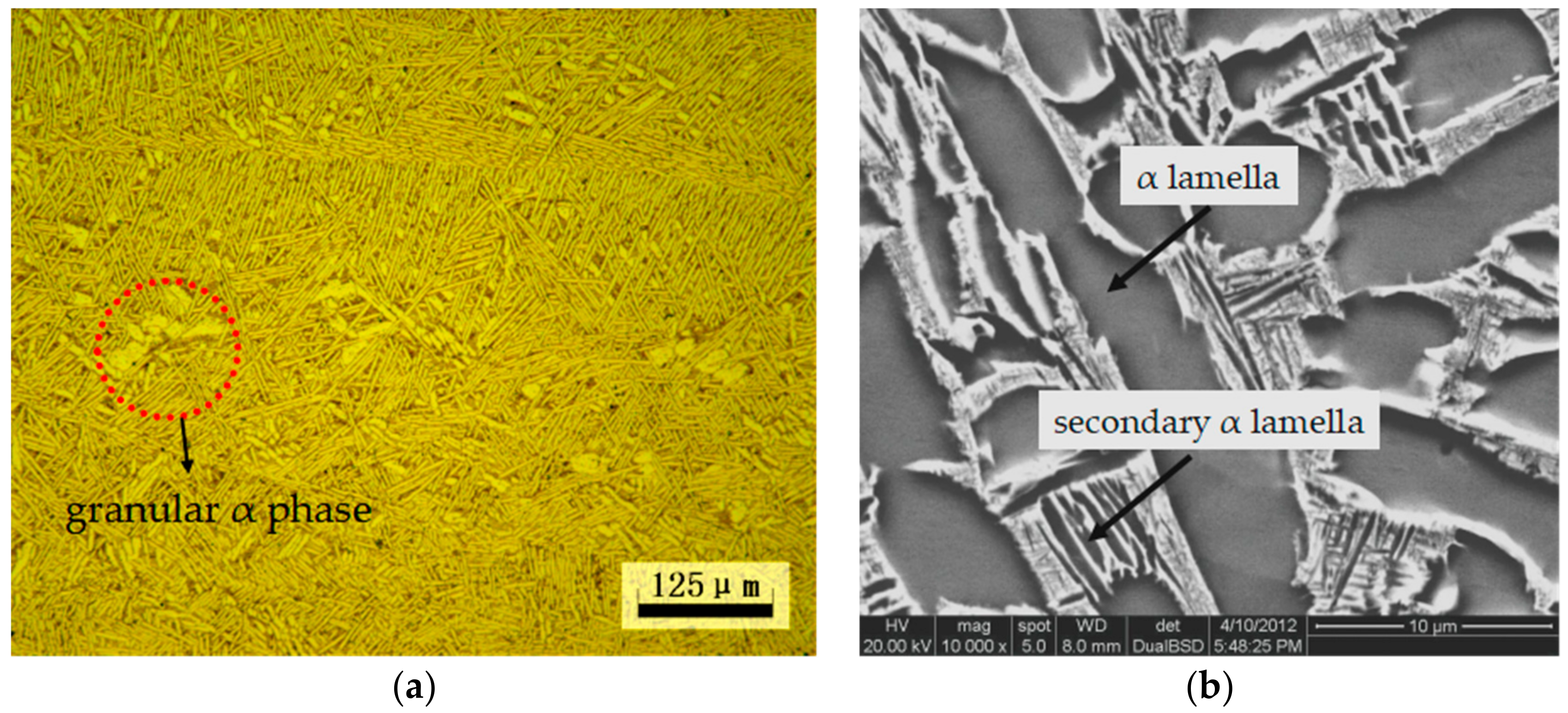
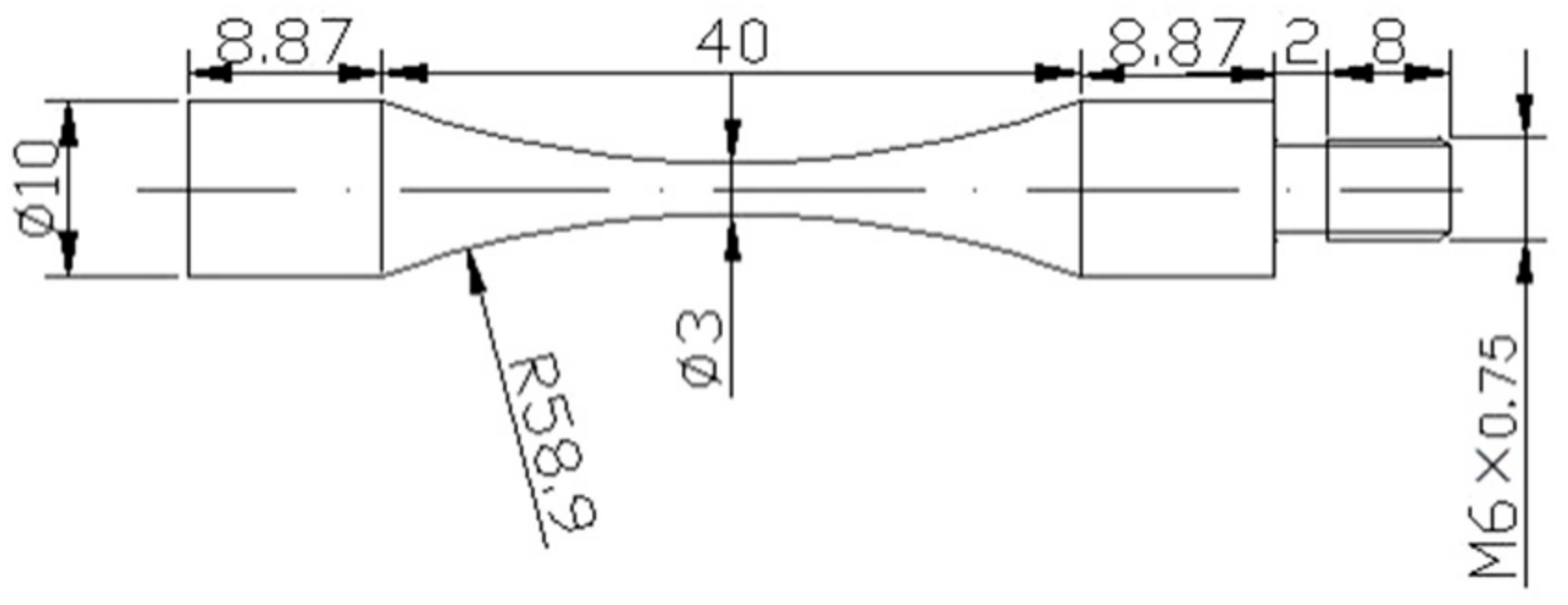

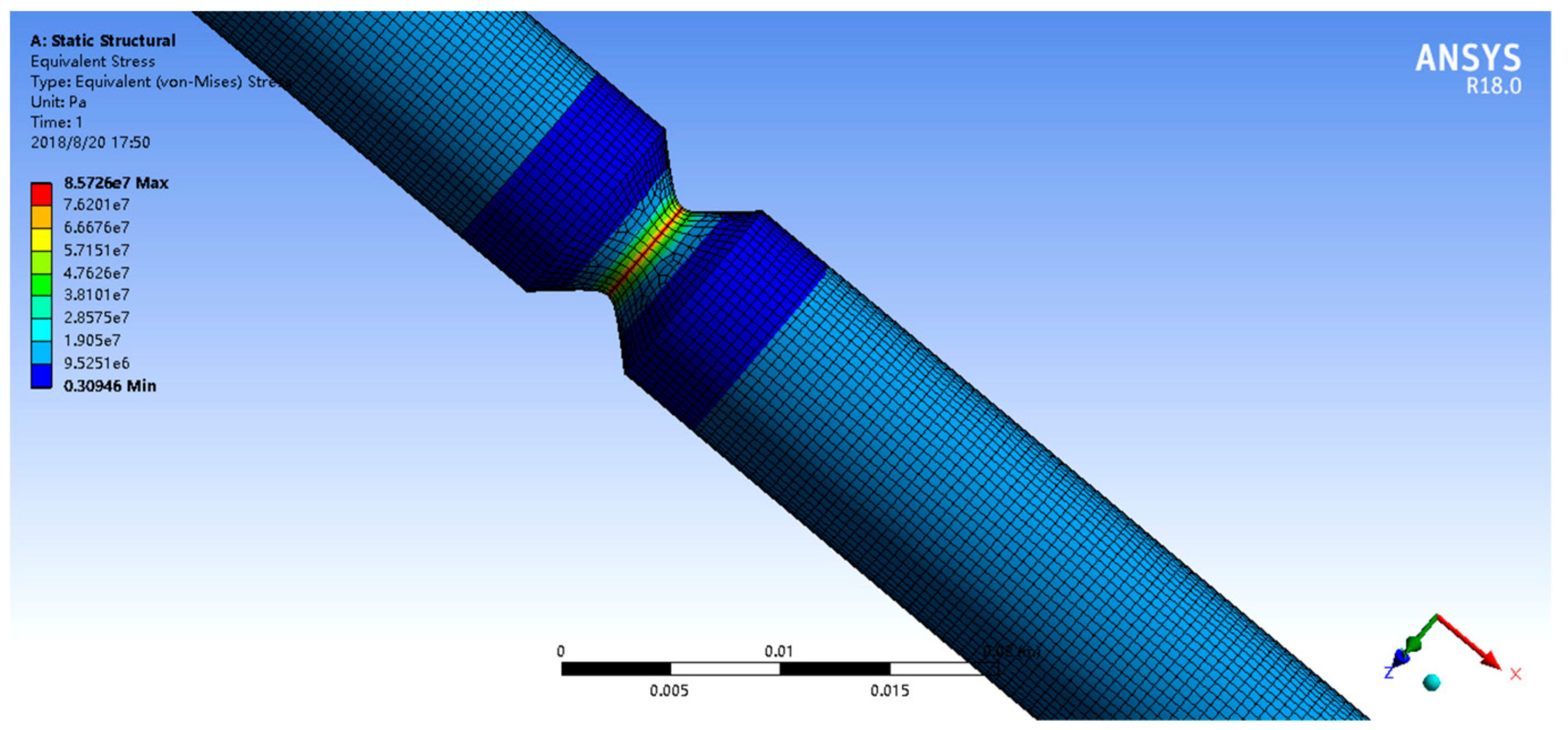


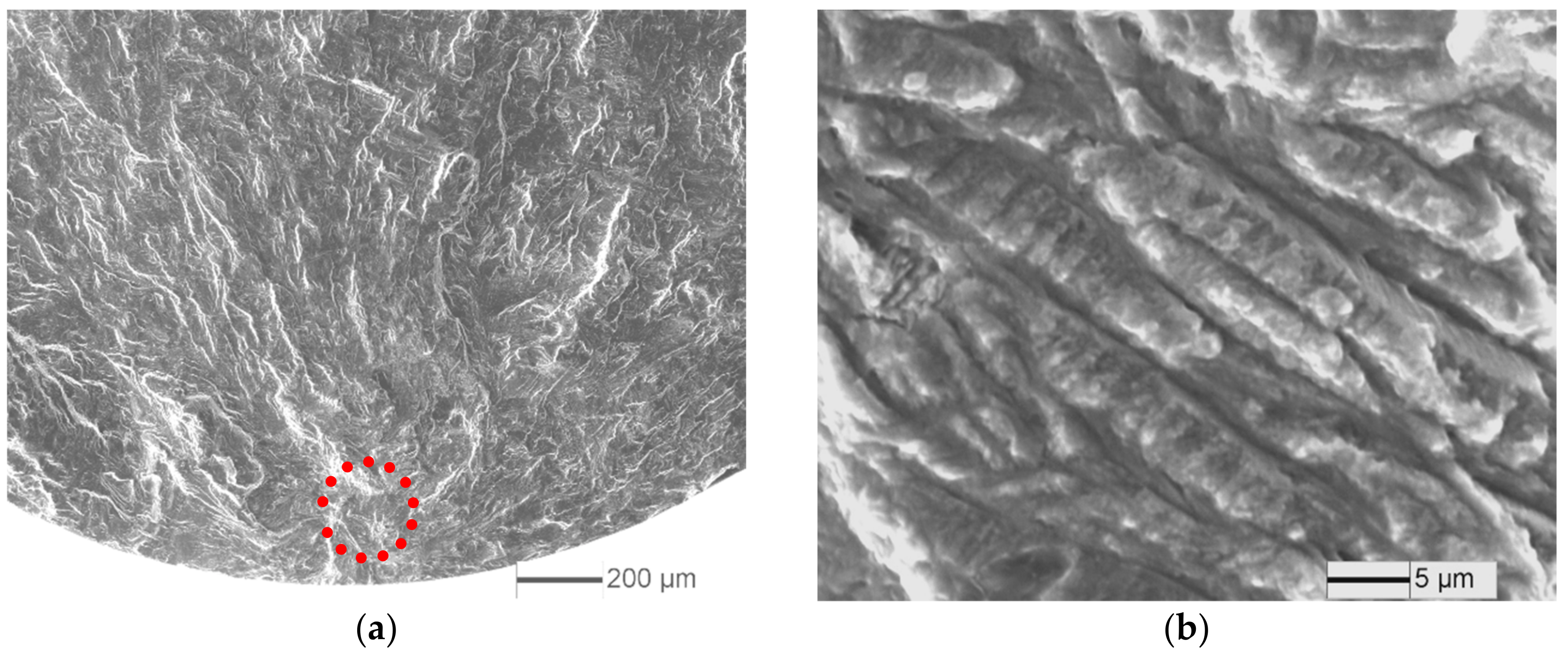
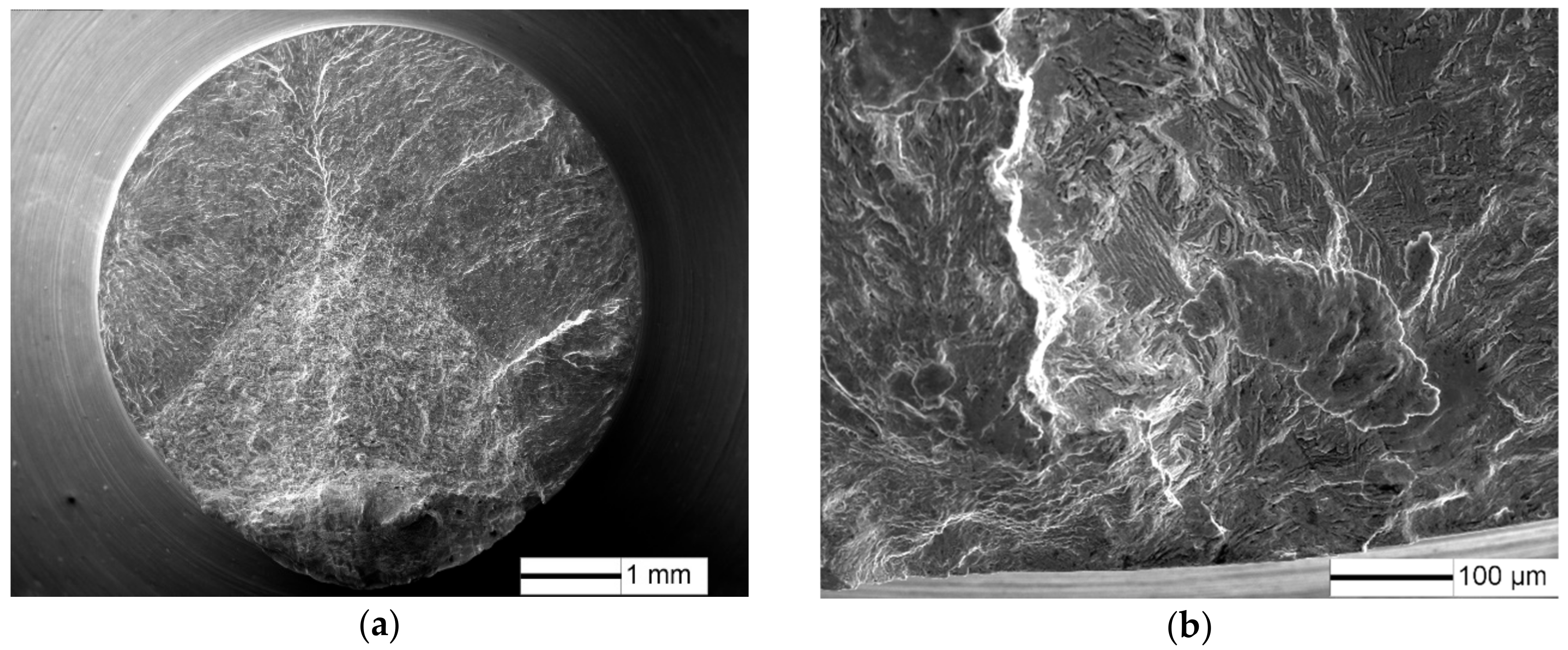


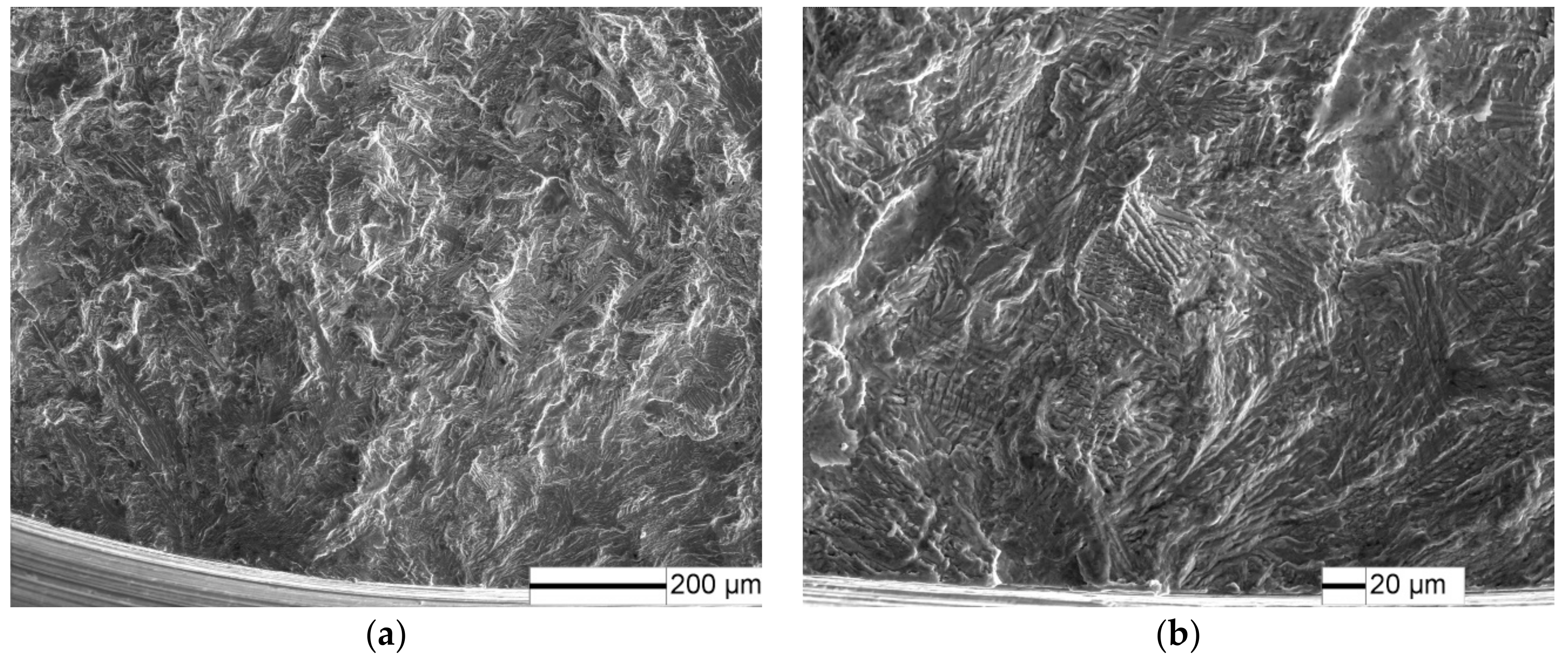


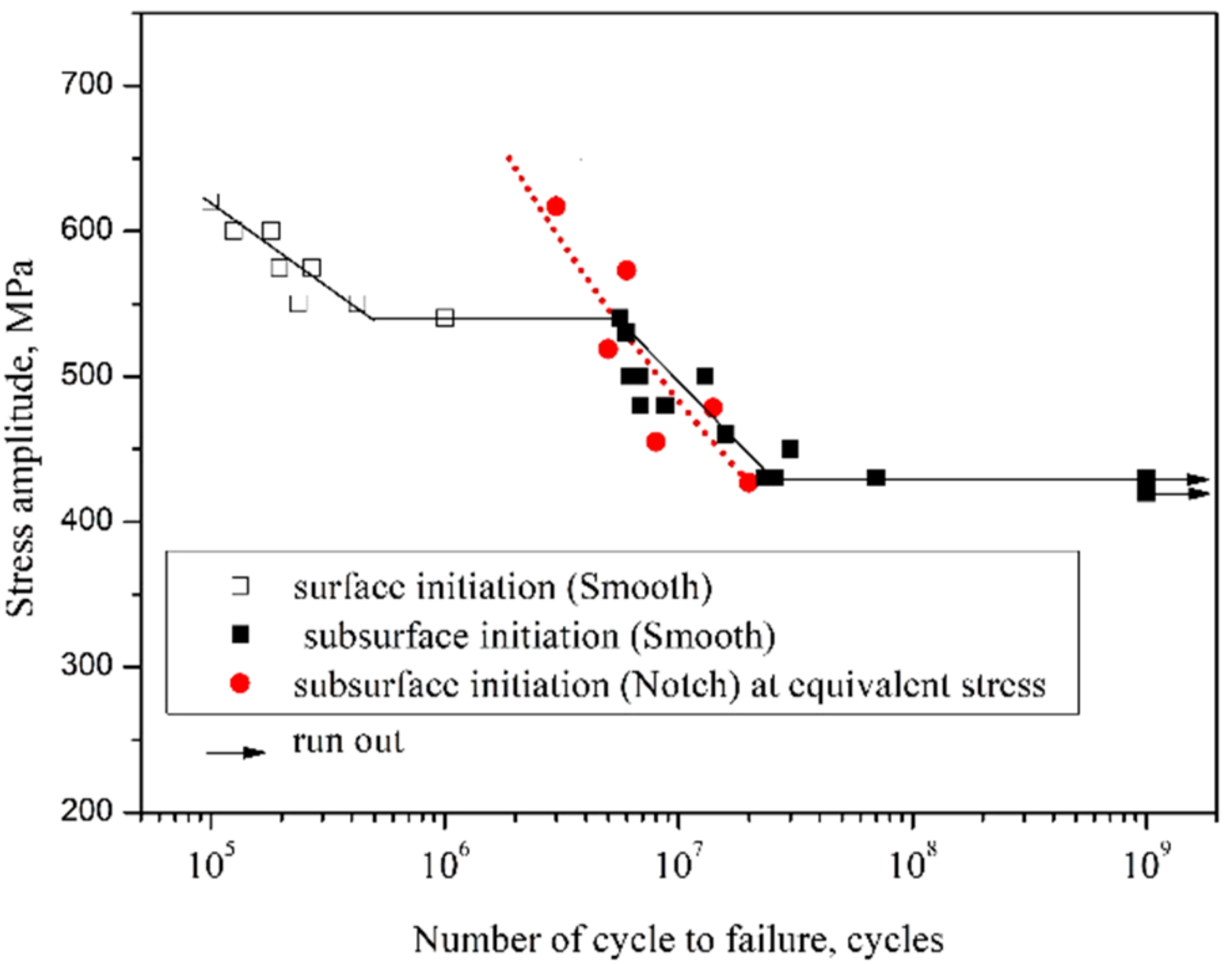

| Fatigue Life | Smooth Specimens | Notched Specimens | |
|---|---|---|---|
| (Cycles) | Fatigue Strength (MPa) | Fatigue Strength (MPa) | Kf |
| 1.25 × 105 | 600 | 400 | 1.5 |
| 3 × 106 | 550 | 350 | 1.57 |
| 2 × 107 | 430 | 300 | 1.43 |
© 2018 by the authors. Licensee MDPI, Basel, Switzerland. This article is an open access article distributed under the terms and conditions of the Creative Commons Attribution (CC BY) license (http://creativecommons.org/licenses/by/4.0/).
Share and Cite
Nie, B.; Chen, D.; Zhao, Z.; Zhang, J.; Meng, Y.; Gao, G. Notch Effect on the Fatigue Behavior of a TC21 Titanium Alloy in Very High Cycle Regime. Appl. Sci. 2018, 8, 1614. https://doi.org/10.3390/app8091614
Nie B, Chen D, Zhao Z, Zhang J, Meng Y, Gao G. Notch Effect on the Fatigue Behavior of a TC21 Titanium Alloy in Very High Cycle Regime. Applied Sciences. 2018; 8(9):1614. https://doi.org/10.3390/app8091614
Chicago/Turabian StyleNie, Baohua, Dongchu Chen, Zihua Zhao, Jianglong Zhang, Yu Meng, and Guiyan Gao. 2018. "Notch Effect on the Fatigue Behavior of a TC21 Titanium Alloy in Very High Cycle Regime" Applied Sciences 8, no. 9: 1614. https://doi.org/10.3390/app8091614





